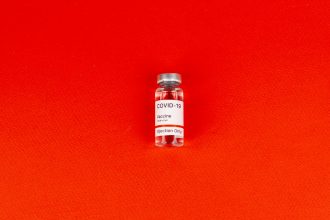/self-healing-differential-privacy-healthcare
Self-Healing Differential Privacy for Healthcare Systems: A New Era of Data Security
The healthcare industry is awash in sensitive patient data, making robust privacy protection not just a legal requirement but an ethical imperative. Traditional privacy methods often struggle to keep pace with sophisticated cyber threats and the dynamic nature of data usage. This is where the groundbreaking concept of self-healing differential privacy for healthcare systems emerges as a vital solution, promising a more secure and resilient future for sensitive health information.
Understanding the Need for Advanced Healthcare Data Protection
Patient records contain a wealth of personally identifiable information (PII) and protected health information (PHI) that, if compromised, can lead to severe consequences, including identity theft, financial fraud, and reputational damage. The increasing digitization of healthcare, coupled with the rise of big data analytics and AI in medicine, amplifies these risks. Ensuring data integrity and patient confidentiality requires innovative approaches that go beyond static security measures.
The Limitations of Conventional Privacy Techniques
While techniques like anonymization and pseudonymization have served a purpose, they often fall short. Anonymized data can sometimes be de-anonymized through re-identification attacks, especially when combined with external datasets. Pseudonymization, while better, still leaves a link to the original individual that can potentially be exploited. Furthermore, these methods typically require manual intervention to adapt to new threats or changes in data handling policies.
Introducing Self-Healing Differential Privacy
Self-healing differential privacy for healthcare systems represents a paradigm shift. It combines the rigorous mathematical guarantees of differential privacy with an adaptive, autonomous system that can detect and respond to potential privacy breaches or policy violations in real-time. Think of it as an intelligent guardian that not only shields data but also actively repairs and reinforces its defenses when anomalies are detected.
What is Differential Privacy?
At its core, differential privacy is a system for measuring and limiting the privacy risk to individuals in a database. It works by adding carefully calibrated noise to query results, ensuring that the presence or absence of any single individual’s data in the dataset has a negligible impact on the outcome. This makes it extremely difficult for an attacker to infer sensitive information about specific individuals, even with full knowledge of the dataset’s structure.
The “Self-Healing” Aspect
The “self-healing” component is what truly elevates this approach. It involves:
- Continuous Monitoring: The system constantly analyzes data access patterns and query behaviors for deviations from established privacy policies or known attack vectors.
- Automated Response: Upon detecting a potential threat, the system can automatically adjust privacy parameters, revoke access, or even temporarily halt certain data operations to prevent breaches.
- Adaptive Reconfiguration: It learns from detected anomalies and evolving threat landscapes, reconfiguring its privacy mechanisms to maintain optimal protection without compromising utility.
Key Benefits of Self-Healing Differential Privacy in Healthcare
Implementing self-healing differential privacy offers a multitude of advantages for healthcare organizations and their patients:
Enhanced Data Security and Compliance
The adaptive nature of self-healing mechanisms provides a dynamic defense against an ever-evolving array of cyber threats. This proactive approach significantly reduces the risk of data breaches and helps organizations maintain compliance with stringent regulations like HIPAA and GDPR, which are paramount in the healthcare sector.
Maintaining Data Utility for Research and AI
One of the persistent challenges with privacy techniques is the potential for them to reduce the usefulness of data for analysis and machine learning. Self-healing differential privacy aims to strike a delicate balance, ensuring that the added noise for privacy protection doesn’t render the data unusable for critical research, diagnostic tool development, or personalized medicine initiatives. The “healing” aspect can involve optimizing noise levels based on the specific analytical task.
Building Patient Trust
In an era where data privacy concerns are at an all-time high, demonstrating a commitment to cutting-edge security measures can significantly bolster patient trust. Knowing that their most sensitive health information is protected by an intelligent, self-protecting system provides peace of mind and encourages greater engagement with healthcare providers.
Implementing Self-Healing Differential Privacy in Practice
Adopting this advanced privacy framework involves several key considerations:
Technical Infrastructure and Expertise
Deploying self-healing differential privacy requires specialized technical expertise and potentially significant investment in new infrastructure or upgrades to existing systems. This includes robust data governance frameworks and skilled personnel capable of managing and interpreting the system’s adaptive behaviors.
Integration with Existing Systems
Seamless integration with electronic health records (EHRs), data warehouses, and analytics platforms is crucial. The system must be designed to work harmoniously within the existing healthcare IT ecosystem without causing undue disruption.
Continuous Evaluation and Improvement
Like any advanced technology, self-healing differential privacy requires ongoing monitoring, evaluation, and refinement. Regular audits and performance assessments are necessary to ensure its effectiveness and to adapt to unforeseen challenges. Organizations can learn more about the foundational principles of differential privacy from resources like the Introduction to Differential Privacy.
Furthermore, understanding the broader landscape of data security in healthcare, including best practices for cybersecurity, provides a crucial complementary perspective.
The Future of Healthcare Data Security
The advent of self-healing differential privacy for healthcare systems marks a significant leap forward in safeguarding sensitive patient information. By offering an adaptive, resilient, and robust privacy solution, it empowers healthcare organizations to harness the power of data for innovation and improved patient care while upholding the highest standards of privacy and security. This technology promises to be a cornerstone of trust and safety in the digital health revolution.
“Self-Healing Differential Privacy for Healthcare Systems: A New Era of Data Security”
“Discover how self-healing differential privacy is revolutionizing healthcare data security, offering robust protection and adaptive resilience against evolving threats. Learn its benefits and implementation.”
Self-Healing Differential Privacy for Healthcare Systems
Featured image provided by Pexels — photo by Mikhail Nilov







